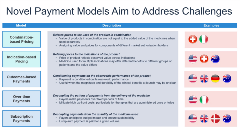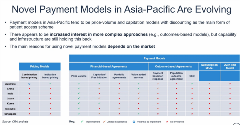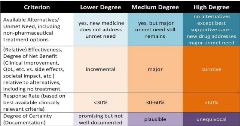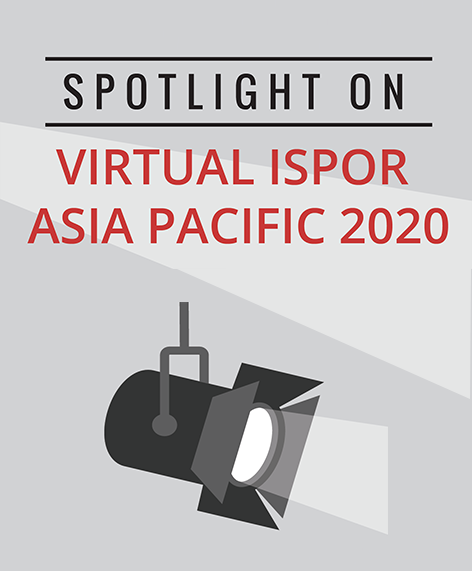ICER Threshold for Innovative Medicines: Harmonization With Novel Payment Models
Cate Bailey, PhD, MApSci, BA, Monash University, Melbourne, Australia; Ingrid Cox, MD, MSc, Dip, University of Tasmania, Hobart, Australia
Innovative new drugs, such as biologics, are more expensive than chemical drugs and traditional payment methods may no longer be appropriate. Novel payment models may be required. The 4 presenters today explored some of the concepts central to ICER thresholds and the applicability of these thresholds to payment for innovative medicines. They discussed how novel payment models may be implemented in the future.
Learning From the Past
Kevin Haninger, PhD, International Health Policy, Pharmaceutical Research and Manufacturers of America (PhRMA), Washington, DC, USA, set the stage for the session by making a distinction between the current era of medicine and the past. He elaborated on how medicines have evolved from being chemical compounds to medicines made of living cells, gene therapies, advanced immunotherapies, and other important innovations. This is important, as these new medicines pose challenges for old payment models, especially those using ICER (incremental cost-effectiveness ratio) thresholds. Some of the challenges associated with new treatments were that some treatments had multiple indications or were used in combination with others, while some only incurred a one-time cost to the health system. As a result, this causes uncertainty for payers in terms of the product demand and overall health system costs and in some cases leads to uncertainty around complete clinical benefits of the product. Consequently, novel payment models or innovative agreements are becoming more relevant. Some of the innovative payment models currently being used are shown in Figure 1.
Figure 1. Summary of innovative payment models and countries where they exist. 
Dr Haninger also said that there is international evidence to suggest that these new models can benefit both patients and payers and that, based on preliminary research at PhRMA, there are some potential benefits of implementing the models in Asia. Notwithstanding this, he mentioned that not all Asia Pacific countries have a policy environment that is ready for the adoption of novel payment models, and these challenges are evident where payment models are evolving. [Figure 2]
Figure 2. Novel payment models in Asia Pacific are evolving.

“The challenges posed by new and disruptive technologies are increasing well recognized, leading to debate on how the barriers preventing the development can be overcome.”—Kevin Haninger, PhD
Helping to Provide Access Through Innovation
Eun-Sook Kim, PhD, External Affairs, Oncology Department, MSD Korea, Seoul, Republic of South Korea represented the pharmaceutical industry at the panel. She argued that flexible ICER thresholds were necessary for the evaluation of innovative medicines and identified some of the barriers to this in the Korean HTA system. Dr Kim concluded by stating, “Personally, I hope that we can find a solution with the consensus between the payer, industry, as well as academia to improve access to innovative medicines with the new novel payment model. “
Balancing the Budget
Brian Godman, PhD from the Karolinska Institutet, Stockholm, Sweden demonstrated his considerable experience of international healthcare markets, data access, and payment schemes with a detailed presentation on key issues and collaborative opportunities regarding novel payment models. Dr Godman discussed models, using Sweden, Scotland, and the Catalonian region of Spain as clear leaders in this area, and described how these concepts may be applied in Korea. He suggested that a balance needs to be struck between providing the right incentive for the development of innovative drugs, such as those for cancer therapy, and consideration of budget impacts.
“If you do not have incentives in the system to develop medicines for orphan diseases where there are low numbers of patients, then it's really not worth companies developing new medicines in that area. So, a flexible ICER is a way forward.”—Brian Godman, PhD
He went on to explain that the counterargument to having flexibility of ICER thresholds is that we may pay more for our medicines, which could ultimately make these medicines unaffordable. Tighter regulations may be required to achieve the best outcomes.
The Transparent Value Framework [Figure 3] was presented as a potential tool to inform discussions between European payers, pharmaceutical companies, and patient groups. This framework was developed to aid in the development of multicriteria decision analyses for orphan diseases and to address concerns with traditional pricing approaches for reimbursement and funding decisions (such as the ICER).
Figure 3: Transparent value framework.

Building a Future With Good Work
There was consensus among the speakers that ICER thresholds posed challenges with newer medicines and that the growing body of evidence supported flexible and innovative novel payment models. There is still work to be done in the Asia Pacific region with respect to a supportive policy and legislative environment, infrastructure, and budget flexibility as new payment models evolve.

